Background image is ©︎ Tomoki Misato JGH, Shin-ei Animation / MOLCARS https://molcar-anime.com/
Introduction
Visitors who drive in Japan will have most likely obtained an international license (IDP). This is usually easy to obtain and can be used for up to one year (from the date of issuance in the home country, not from date of entry into Japan). Those who reside in Japan for longer than one year will ultimately have to get a Japanese license if they want to continue driving legally.
Most people will be able get their home country license converted (as long as it is a full and valid license). This is a hassle but a lot easier if you are from a country (such as the UK) for which the practical test is not required, sorry ‘Muricans.
This article is not about that conversion process. If you do not have a license in your home country or, like me, you obtained yours within three months prior to your arrival in Japan1, you will have to go through the regular Japanese system to obtain a license from scratch.
There are plenty of guides out there for converting your license and I recommend starting with the JAF website. Unless you are doing the conversion specifically in Nagasaki prefecture at the Omura test centre and want to familiarise yourself with the facilities, you may not find my article helpful.
I made this guide because when I started this process there was limited information available to me from the perspective of a non-Japanese resident who could also drive a manual fairly well.
In fact, because I was able to get an IDP, once I actually ended up driving a rented car to the test centre to take a driving exam to prove I could drive, all clear so far? I wonder if this is how the Pui Pui Molcars get around the fact that as car/guinea pigs hybrids going to driving school, they are technically driving illegally to get to the school…Unless they are born at the school? Clearly, I still have a lot to learn about driving.
©︎ Tomoki Misato JGH, Shin-ei Animation / MOLCARS https://molcar-anime.com/
Deciding How to Get Your License
First, if you have never learnt to drive before and/or are going back to your own country soon, you may want to consider waiting until you get back. If you want to start driving asap and challenge yourself, go for it!
There are effectively two options for acquiring a license.
- Going through the prefectural license office and taking all exams there.
- Going to a Driving school and only taking theory exams at the license office.
Which you choose is going to be completely dependent on your personal situation, but from my perspective I would only recommend driving school under a few specific circumstances:
- You live very far away from the prefectural license office.
- You don’t need to worry about saving money.
- Your Japanese is poor, and you know of a local driving school that will teach you in English (I’ve heard there is at least one in Tokyo).
- Your Japanese is good, but you feel/know that driving is incredibly difficult for you and are extremely nervous about the whole process.
| Driving school | Test centre | |
|---|---|---|
| Cost | Very Expensive; Over 200,000 yen, usually over 300,000 | Not cheap if you need lessons; I spent ~110,000 |
| Convenience | Convenient; Many more locations and week/several week-long residential courses. | Inconvenient; Usually one or two in a prefecture, islands may have a small one. Be prepared to travel a lot. |
| Difficulty | Very easy; everything is spoon-fed and you take the practical test with the people who have been teaching you at the driving school course. | Relatively hard; The practical test invigilators are strict and if you don’t take lessons you may fail many times. |
The main reason I don’t recommend driving school is poor cost-effectiveness. Up to half of what you pay for is theory lessons. When you consider you can pay a few thousand yen for the theory book these places use with everything you need to know for the test in, and that you can do free practice test questions online, driving school looks incredibly unappealing.
For reference, here is an estimate of what the whole ordeal cost me without driving school:
7.5 course lesson hours + 4.5 road lesson hours =Total 56,400
Transport costs 20,000-30,000
Extra safety course 16,450
Exam and other test centre fees 15,400
Total ~110,000 yen
Consider that if you’ve had previous driving practice, you may not need as many practice hours to be able to pass the test as me but if it’s your first time driving you made need twice as many or more. I will explain where you can take lessons outside of a driving school next.
Before moving on, have a quick look at this guy’s experience. He reduced the amount of practice he needed to pay for by getting friends/colleagues to help teach him the basics. For a manual this is especially helpful as it can take a while to get a hang of using a clutch. Unless you have a pressing need to learn a manual, consider learning just the automatic, it will be a lot easier and most cars in Japan are automatic, including practically all rental cars.
Driving Lessons Outside of Driving School
So, you’ve also concluded that driving school is basically a scam, great! Now do you even really need lessons? Well, as I already had a driving license, I initially thought about simply repeating the exam until I passed while watching youtube videos to help with the finer points they may be looking out for. As the cost for taking the exam (provisional) is 4,350 yen this seemed like a cost-effective option. However, the catch is while you can take lessons on the weekend, the test centre is only open on weekdays. I work on weekdays, and I did not want to use up all my annal leave.
Keeping that in mind, let’s have a look where you can take individual driving lessons.
‘Driving Practice place’ – 自動車練習所・自動車練習場・自動車教習所.
Generally a lot smaller than driving schools (自動車学校), these places fill an important gap in the market.
Because most Japanese people go to driving school, you may have a tougher time finding them. I’m not sure about other places, but In Nagasaki, I could only find a few located near the license office in Omura. Here are two that I’ve used:
If you’re female you may be more comfortable here as all the instructors are women. I really like the owner Nomura, no-nonsense, smart and hardworking. At least one of the other instructors was rubbish though. A 50min lesson is 4,700 yen.
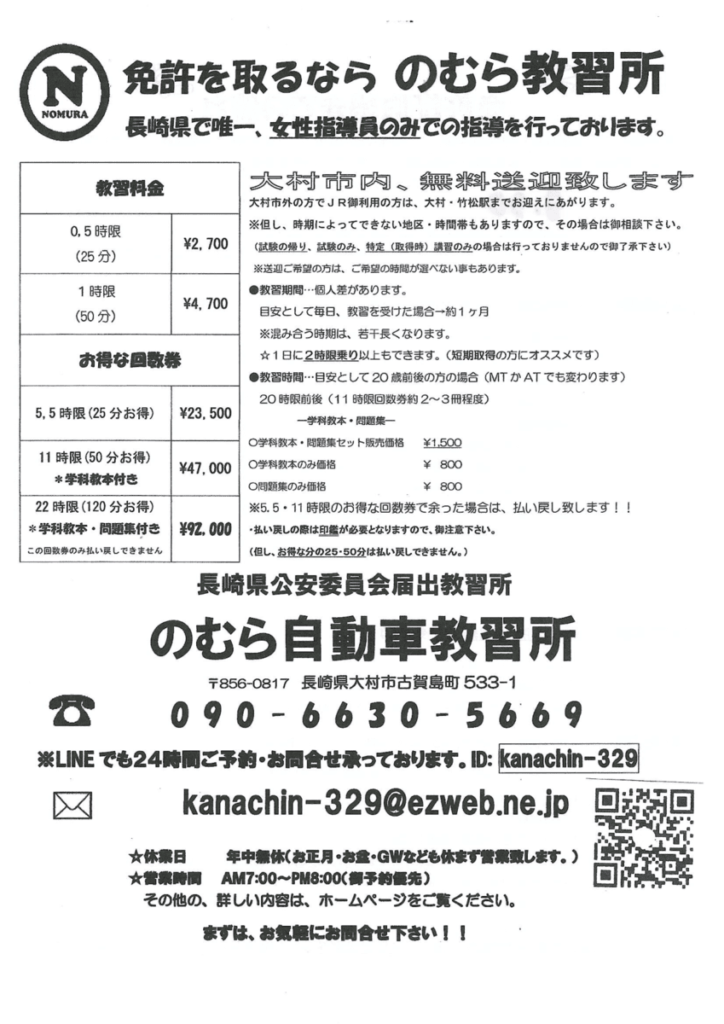
I chose Nomura because they specifically advertised that with them you would be able to do some practice on the actual license centre course. After reading some more information from the license centre I think if you booked, you could technically practise on the course even with a friend in their car if the car fit within certain regulations (though I get the feeling they would be very reluctant to allow anyone do this let alone foreigners). Be aware if you think practicing on the test course will be important to you, as Nomura were reluctant to say they would do a test course lesson with me. I assume because there are limited spaces and they wanted to prioritise students who were taking more lessons with them. Either way, if you go with Taiyo instead, do check with them first on their policy about this. I was insistent and was able to get a test course practice slot at Nomura, but the whole system was not transparent at all.
The normal booking system at Nomura was also a pain, you had to say what day and general time of day you wanted, then the day before they graciously let you know what time you’d been booked in for (Yes, I’m a little salty).
Don’t be late at all (even just a few minutes) for lessons either because you’ll have to do a half lesson or be forced to cancel and pay a fee (grr..). Try and arrive 15 minutes early if you can.
The course they have at Nomura is smaller than Taiyou’s but Nomura has a very nice toilet.
Even when I was at Nomura, I still had to come here to take a special course (特定講習). I also came here later on for when I was acquiring other vehicle licenses. The price is the same as Nomura 4,700 yen for 50 min.
The instructors were mostly middle-aged men with maybe one woman? Anyway, my impression from going there later was they were all fairly decent instructors, not quick to anger and didn’t raise their voice or anything like that.
The course is bigger than Nomura but still very small compared with the actual test course at the license office.
The kind of practice places described above are good if you can find one near you or near the license centre. The next thing to think about is the theory test.
The Theory Exam
This book is essential.
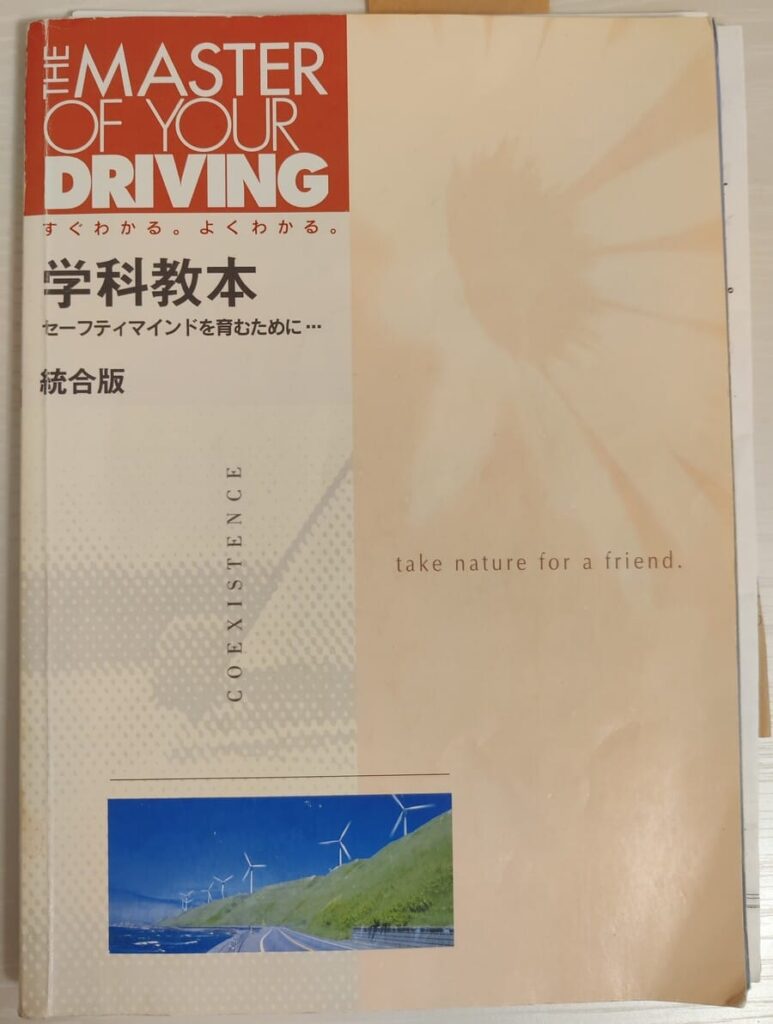
Are you ready to take nature as a friend (and then betray them as you pollute the earth with your exhaust fumes)?
While very rare, an English edition of this book does exist and You can sometimes find it online or potentially buy it from a driving school or practice place.
Nomura sells the Japanese book and practice question booklet for 800 yen each. I assume Taiyou does as well. Niether place has the English edition.
Now you need to think about if you want to take the test in Japanese. You could take it in English and I think perhaps other common languages in Japan like Chinese or Vietnamese. If your Japanese is at or above N2 you should consider the Japanese. The most difficult part I think it simply the amount of time it takes to read the questions, if your reading is too slow, you may not finish the whole test in time.
The test is an MCQ and 70% of the questions are really easy, but you need 45/50 to pass the provisional theory and you only have 30 minutes. For the main theory exam later on it’s a 1 hour exam and you need 90/100.
I’ve read things online about the English translation occasionally being a bit dodgy with the questions hard to understand. I chose to do the exam in Japanese because I could borrow the Japanese textbook from my friend and I thought that ultimately it will benefit me to know the Japanese terms and get some reading practice in.
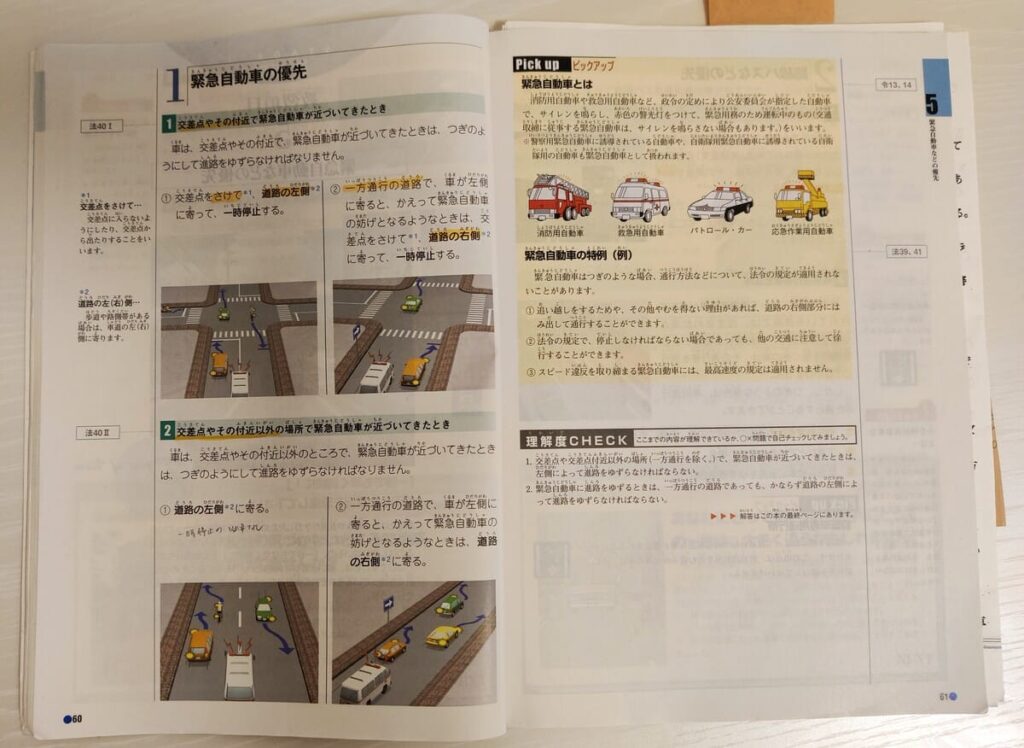
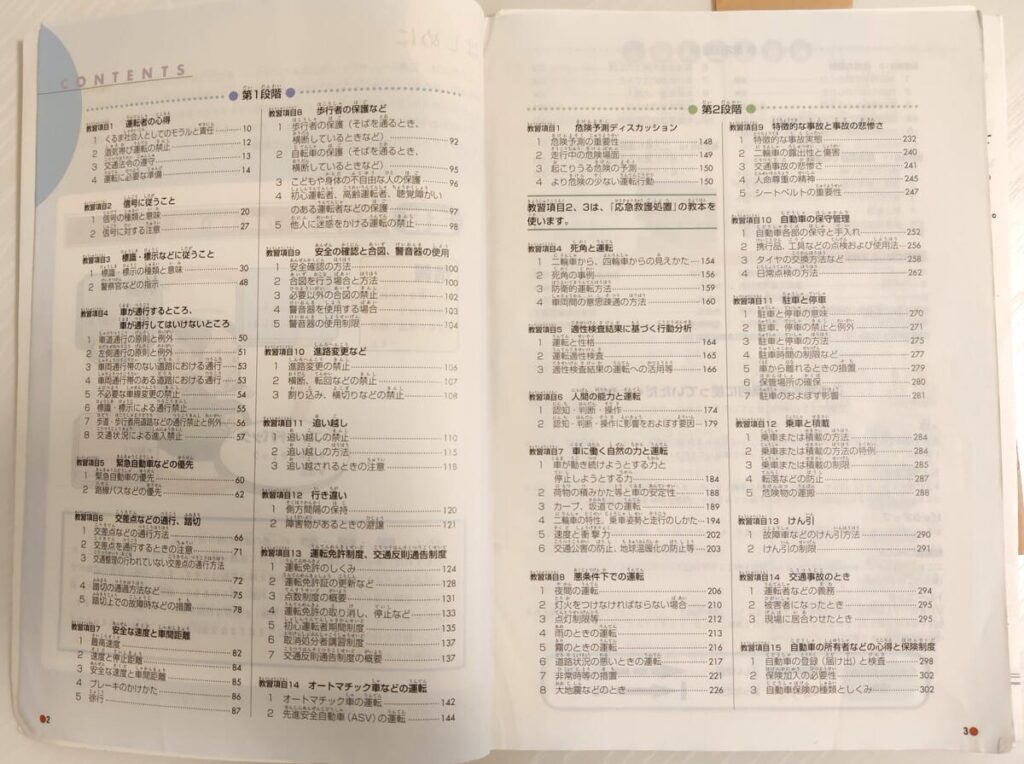
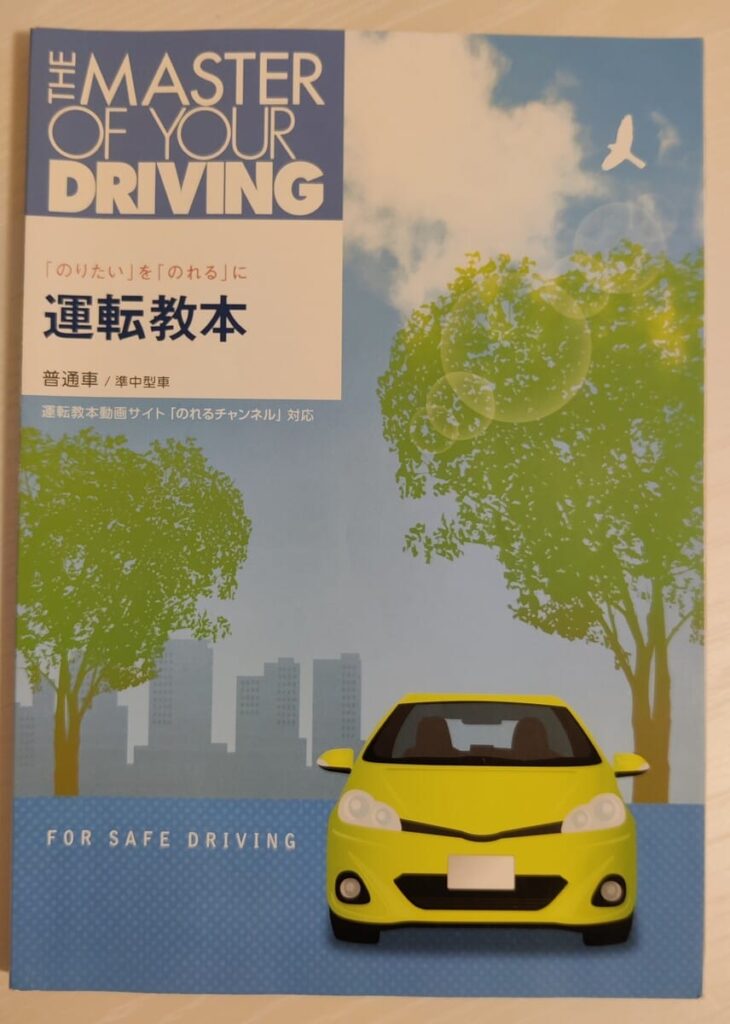
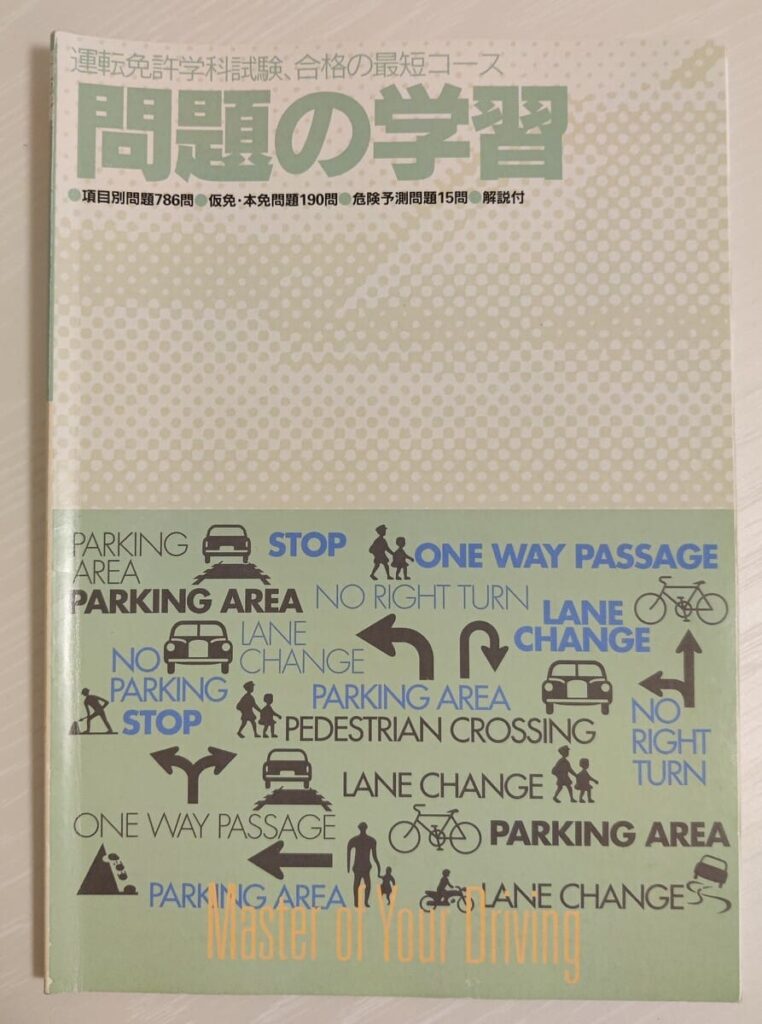

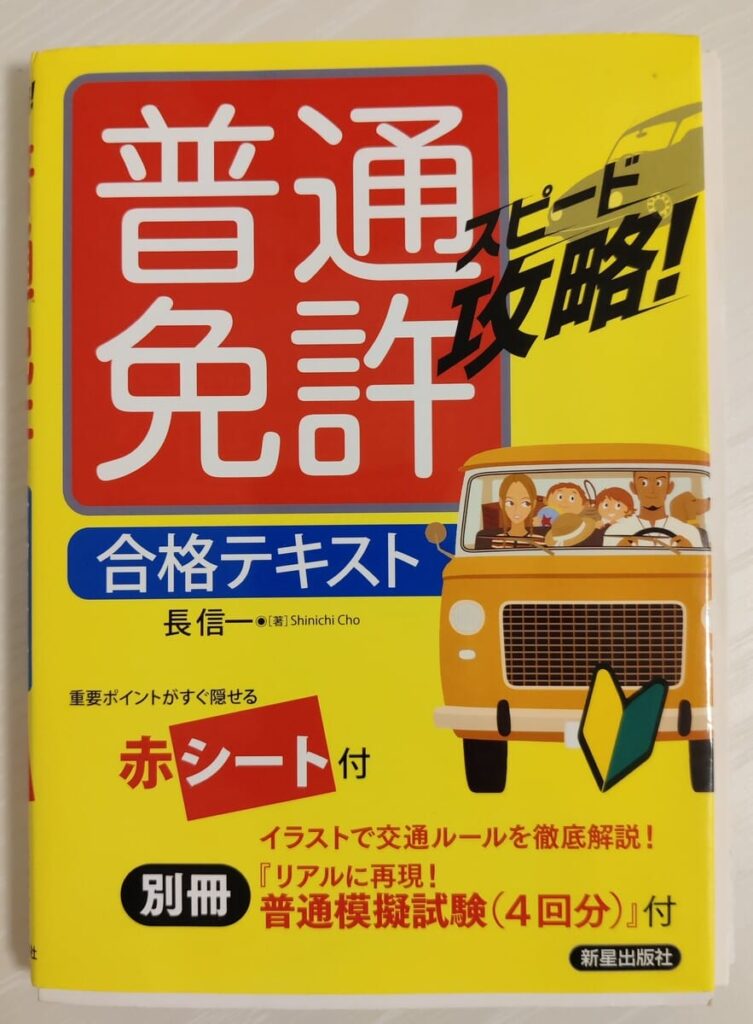
If you are learning in Japanese, this website has a load of free practise questions. You have to make an account but that’s it. After finishing reading the book, I must have done almost every one of the questions on this website. The questions are uploaded by other users but there are very few shitty questions. Even if there are, many other users will be flagging the question so it’s easy to spot. Because it’s all on the same topics from the book the questions ultimately make for good practice. By using the book, the companion questions booklet, and the ‘safety driver’ website, I got full marks on the provisional theory exam and 98/100 on the main theory.
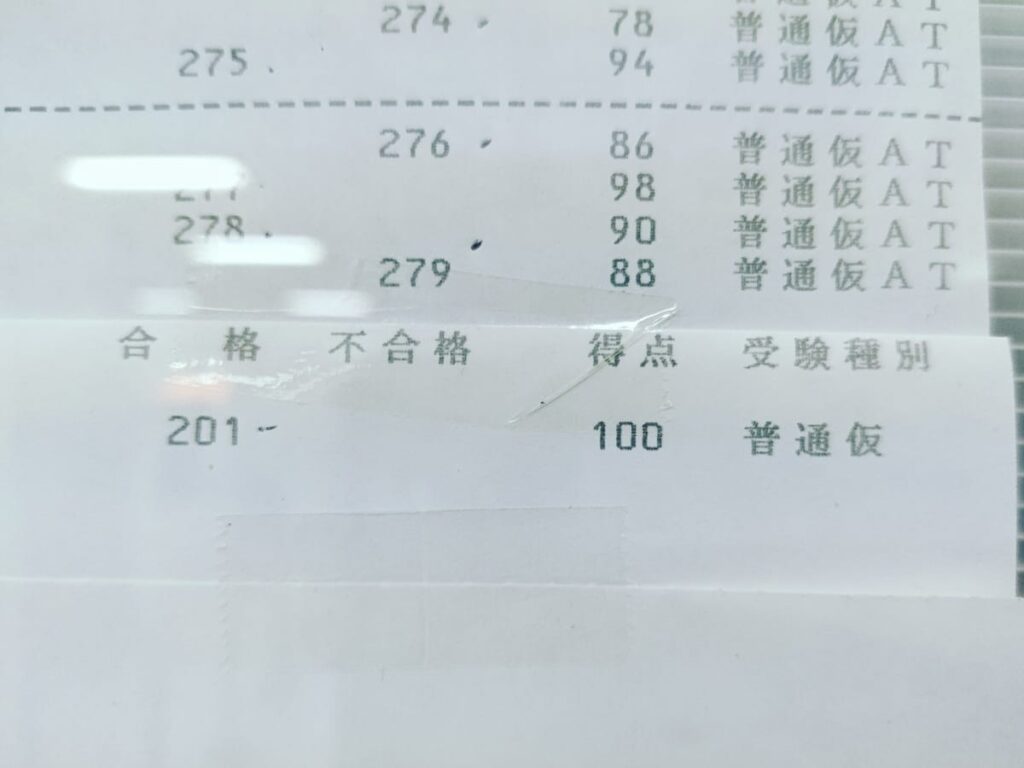
Overview of Process
‘What are the actual steps one needs to take to obtain a license?’
Keep in mind I can only explain the steps for the Nagasaki prefecture license centre in any detail.

Please check your prefectural police website where they will have the information you need, likely all in Japanese2. This website also has thorough explanations in Japanese for every prefecture.
If you are from Nagasaki, please also check the details yourself on the Nagasaki prefectural police website for the provisional and main exams.
Provisional theory. When you take this, if you pass, you can take the provisional practical in the afternoon so best to be ready for both before going. The first time you don’t need to book (If you need to re-take the provisional practical you need to phone up and book), just go to the test centre for registration from 9:00-9:30am. I recommend arriving about 8:00-8:30am because this gives you plenty of time to buy the payment stamps from one booth and fill in the application forms before giving these and all other required materials to the booth for the provisional theory exam (学科). There are usually people around to help so don’t be afraid to ask if you don’t know where to go or how to fill in a form.
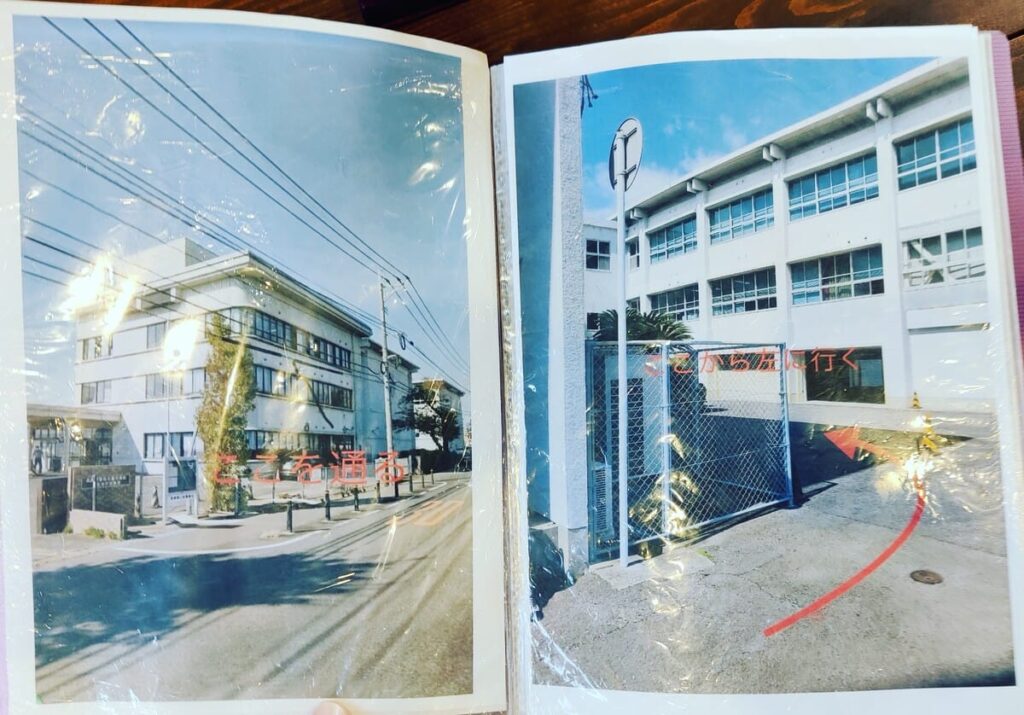
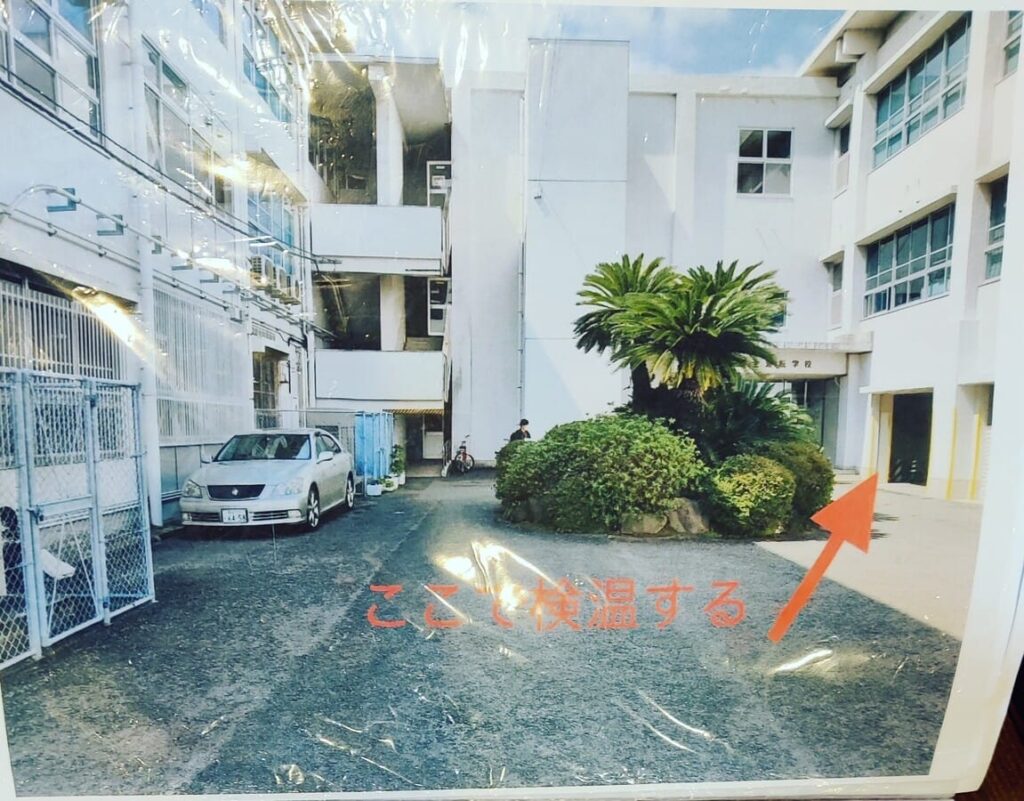
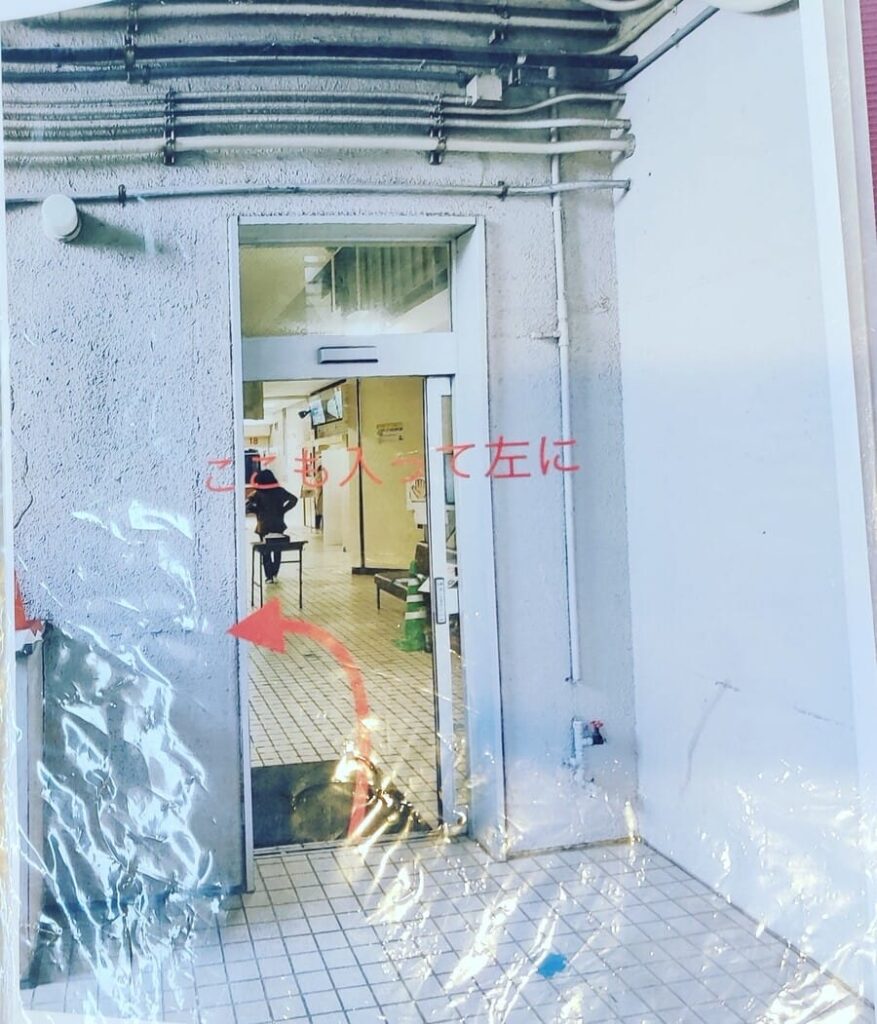
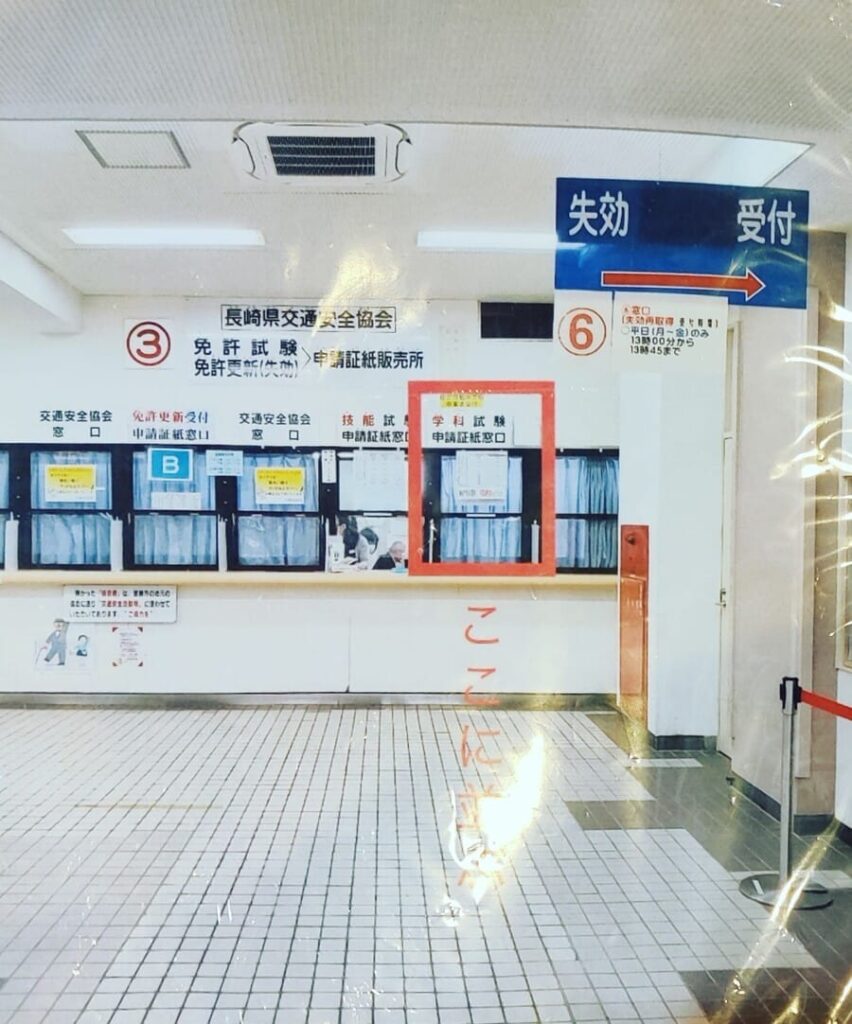
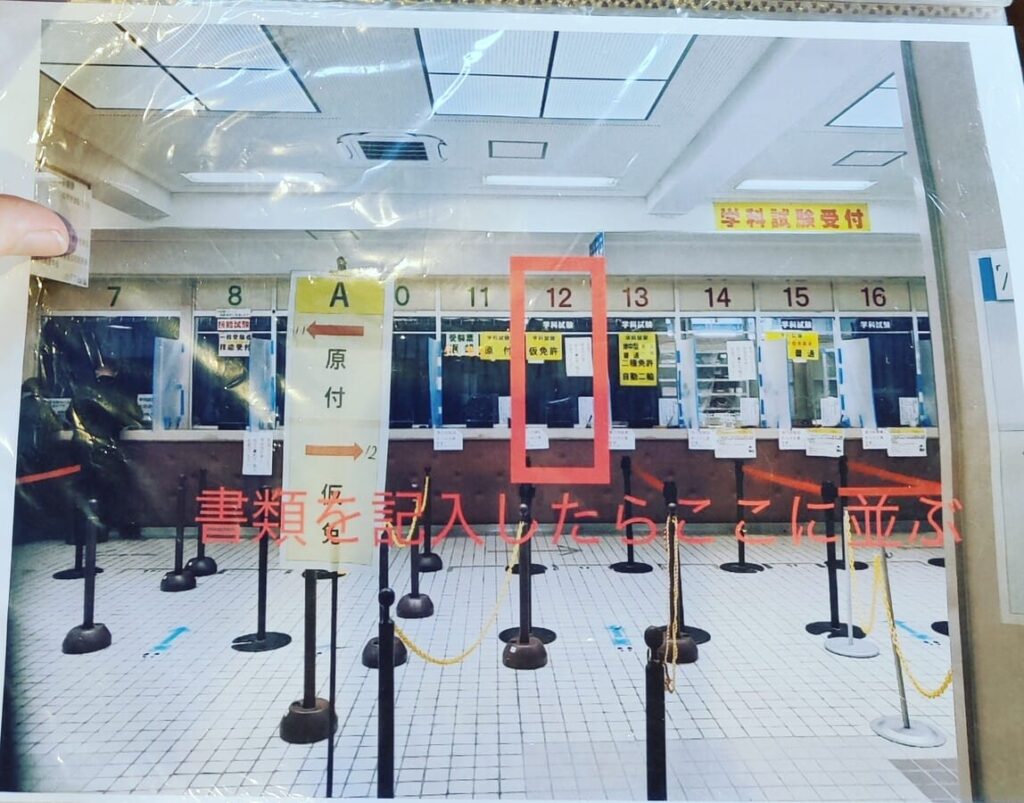
| Exam Required documents and materials | |
| Provisional | Main |
| –Juuminhyou 住民票 that includes your nationality or Driving license (You technically could have a moped license). As a foreign resident You will also need your Zairyuu 在留card. –Identification. Your zairyuu should be fine, may as well take your passport just in case. –Two Pictures. 3 cm vertical x 2.4 cm horizontal. Taken within the last 6 months. No hat. Top third of your body in frame. The Nagasaki test center provides pencils and rubbers for the test, but its worth bringing a backup. If you attended a practice place they will probably have given you a practice record sheet and you should take this with you. | –Provisional license. –Identification. –Road practice sheet 路上練習申告書. you will receive this when you pass the provisional. You must have done 5 1-hour long practice sessions. If you did them with a friend you need a copy of both sides of their license (they must have also obtained their license more than 3 years ago). –Picture. 3 cm vertical x 2.4 cm horizontal. Taken within the last 6 months. No hat. Top third of your body in frame. |
At the payment booth you say you will do a karimen gakka shiken (仮免学科試験). They will give you 1 provisional license application form, 1 eligibility sheet on which you check off various things to tell them you don’t have any health problems or driving offences that may disqualify you from driving, and 1 sheet with the prepay stamps that you also need to fill in with basic information.
At the application booth they will go over your documents, stamp the application and give that back to you. This is where they will confirm what language you will take the test in.
Next, you take an eye test. For the first part you have to say what direction the arrow is pointing in as it gets progressively smaller. You can say in Japanese or just hold out your hand and point in the direction. The second part is depth perception where you press a button when a stick moving back and forth aligns between two others.
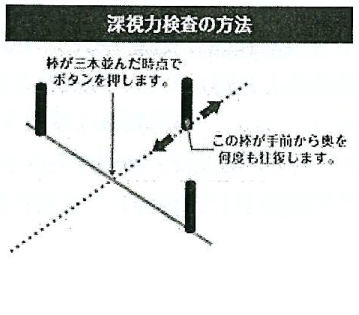
There is a room on the second floor where the theory exam is held.
After you finish the exam, you go downstairs again to wait for all examinees’ results to be displayed on a screen. If you pass, you can take the practical. After being given a verbal explanation and a practical test explanation leaflet, You go outside and cross the road to get to the test course. There is a waiting room inside the course close to the entrance.
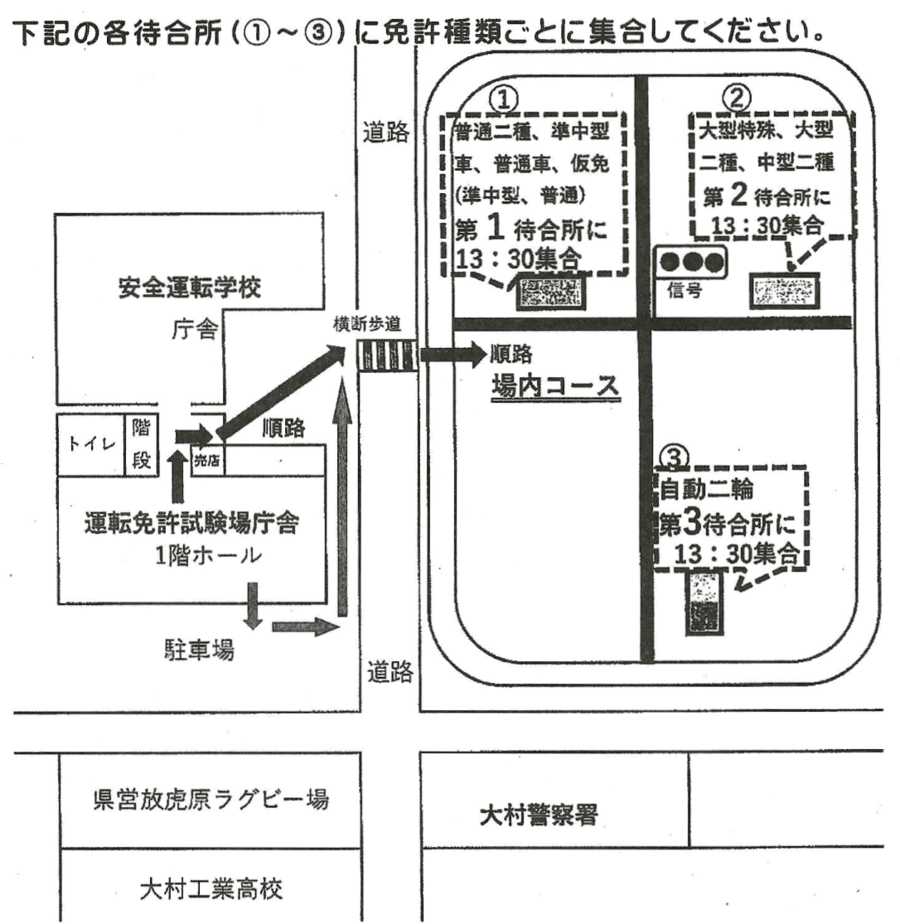
If you then pass the practical and receive your provisional license, you will be given a sheet with information about doing road practice and the next exam. In addition, you will receive a sheet that you will need to record the details of each practice session in.
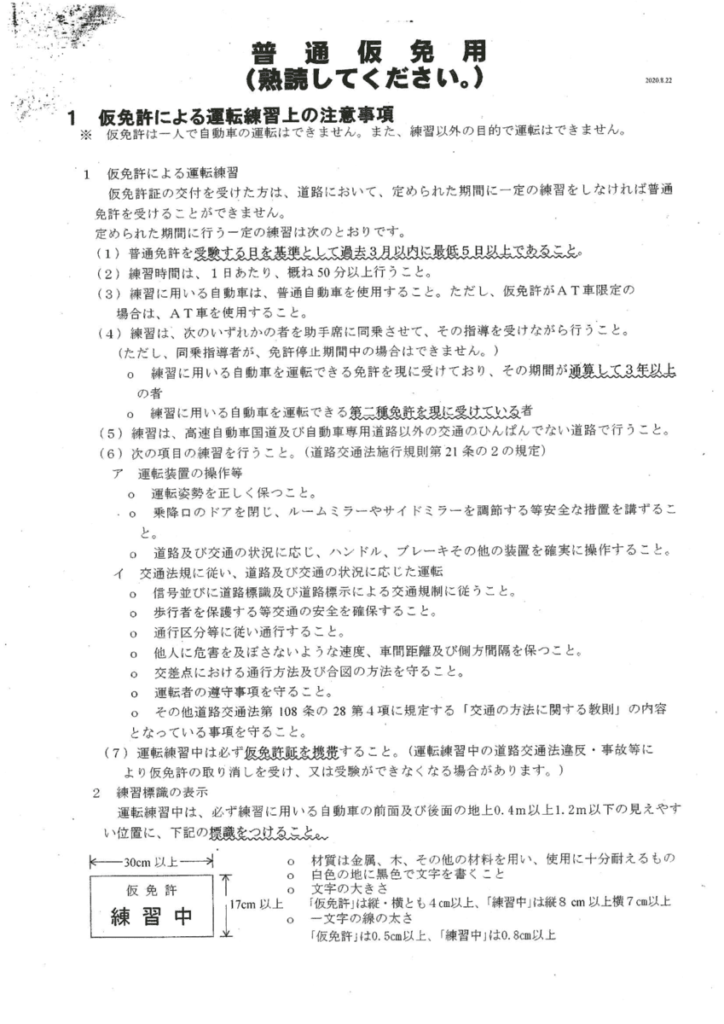
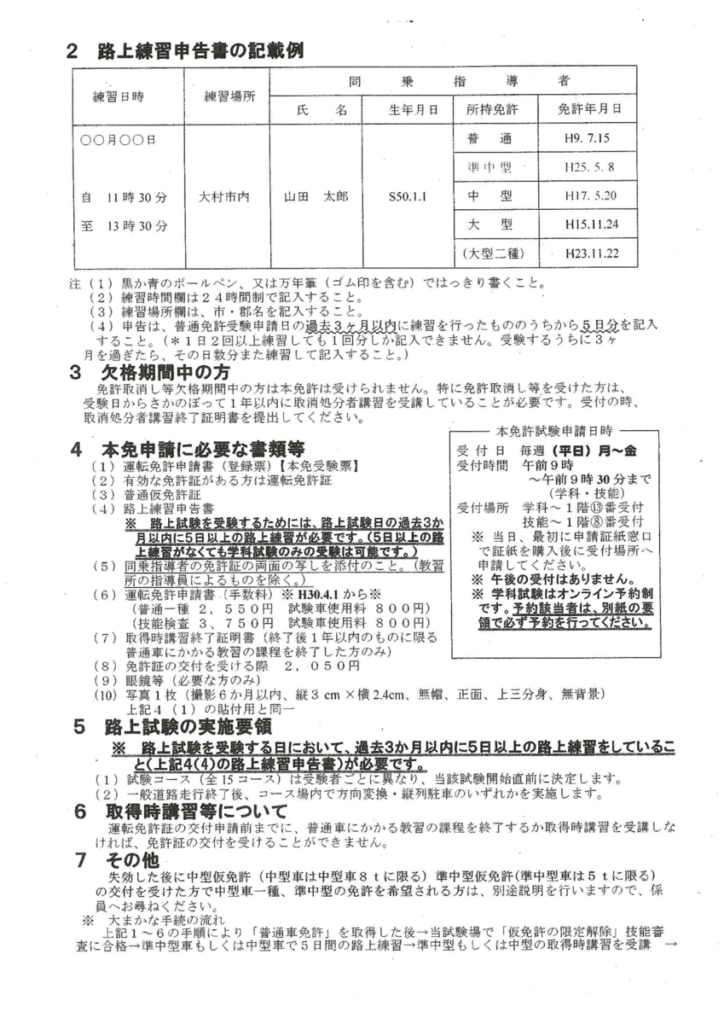
Road practice sessions can be done at a practice place with an instructor and they will fill out your sheet for you. Alternatively, you can do the sessions in a friend’s car. They must be in the car with you and have had their license for 3 years. When doing a practice session, you need to stick plates on your car showing you are doing practice3. You also need to bring a copy of your friend’s license (both sides) when you register for the main exam.
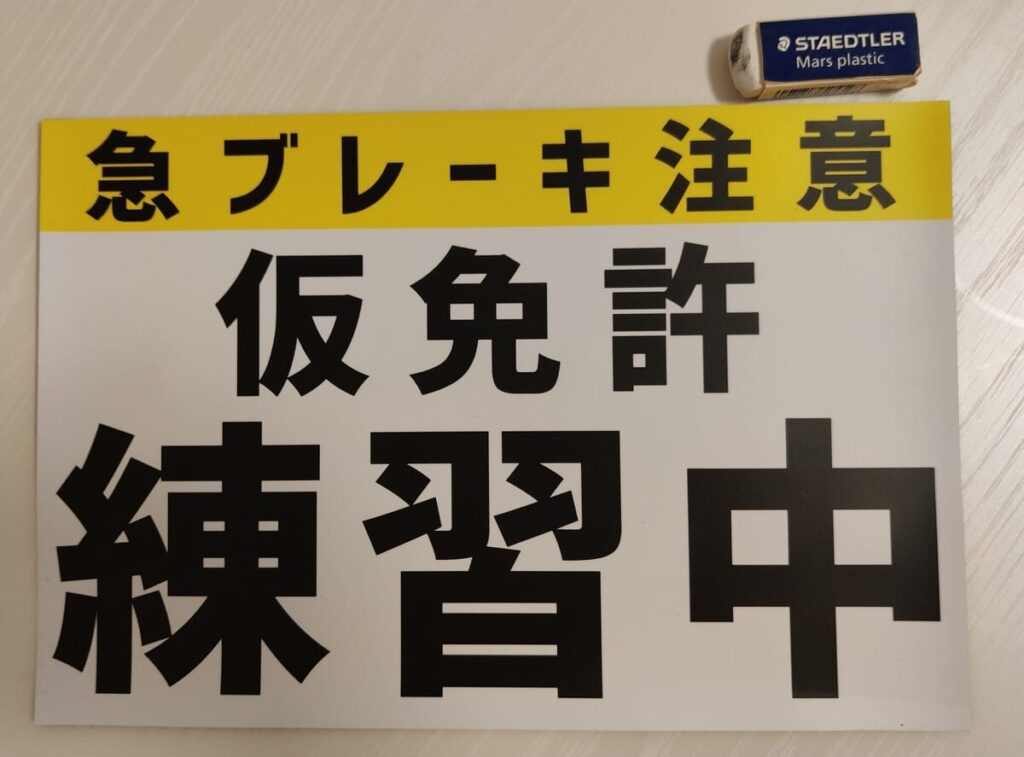
Finding someone to lend you their car and time like this isn’t too hard if you’re driving an automatic, but friends with manual cars can be rather rare. You need to do 5 sessions of at least an hour each spread across separate days to qualify for taking the next exam. However, as it’s something you just fill in yourself, there is no way of them proving/disproving you actually did the practice sessions…just saying. For a practice place they will stamp your sheet and you don’t need a license copy or anything.
The provisional license lasts for 6 months, and the 5 road practice sessions must all have been within 3 months leading up to taking the main exam. i.e. a road practice record effectively expires after 3 months.
For the main exam you need to book a place. The easiest way to do this is just call them up. The main exam works the same way as the provisional where if you pass the theory, you can take the practical the same day.
Another requirement before being able to receive a full license is that you have to take a special motorway (freeway) driving course and first-aid course. The best way to take these is at Taiyou practice centre and to take them before attempting the main exam. Otherwise, you’ll just have to go back to the exam centre later after taking them to pick up your license. Nomura practice centre basically booked the courses for me, but even if you haven’t practiced at either practice place, you can probably just phone up Taiyou and inquire about it.

If you have taken the extra course, when you pass the practical exam, you will get your picture taken and receive your license the same day.
That’s all the process side of things. Now let’s take a closer look at the practical exams.
Practical Exam and Course Specifics
- Provisional
The practical test consists of driving around a course on one of several possible routes which will always include the following features: s-curve path, crank turn path, pretend train crossing, 50km/h section, blind corners, stop signs and a hill start. Setting up in the car is part of the test (adjusting seat, seatbelt, adjust mirrors, push down break and clutch, check gear is in neutral, engine on, gear into first, handbrake down, signal, check both blindspots and all mirrors [5 point check], pull away.). You aren’t required to do any checks before getting in the car at the Nagasaki test centre, but I’ve seen online other places are particular about some things like checking nothing is on the floor in front of the car before entering for example. The test finishes after you’ve exited the car (make sure to secure the car – for a manual car you need to put the gear into reverse. I failed my first attempt because I forgot to do this. Also check your blind spot behind before opening the door and open it slightly before checking outside again and then finally opening the door fully).
Between 12:00-13:00 you are allowed to walk around the test course as long as the traffic light in the middle is turned off and there are no cars on the course whatsoever. This can be useful to get a feel for the course. If you have been learning with one of the practice places, one of the instructors will walk around with you and their other students and explain each part of the course.
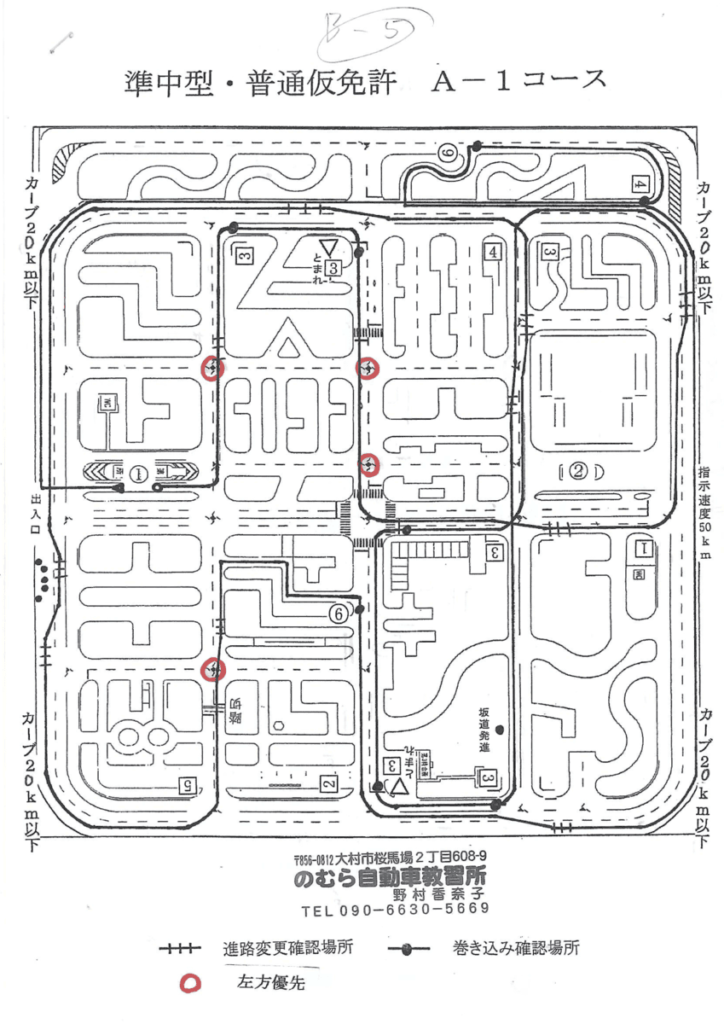
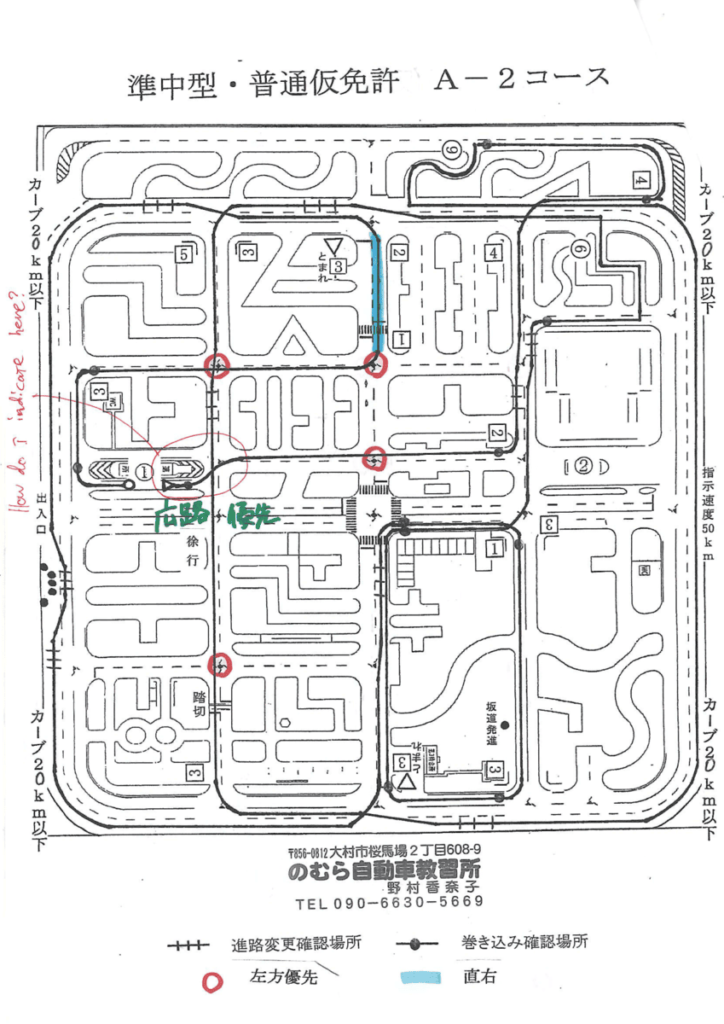
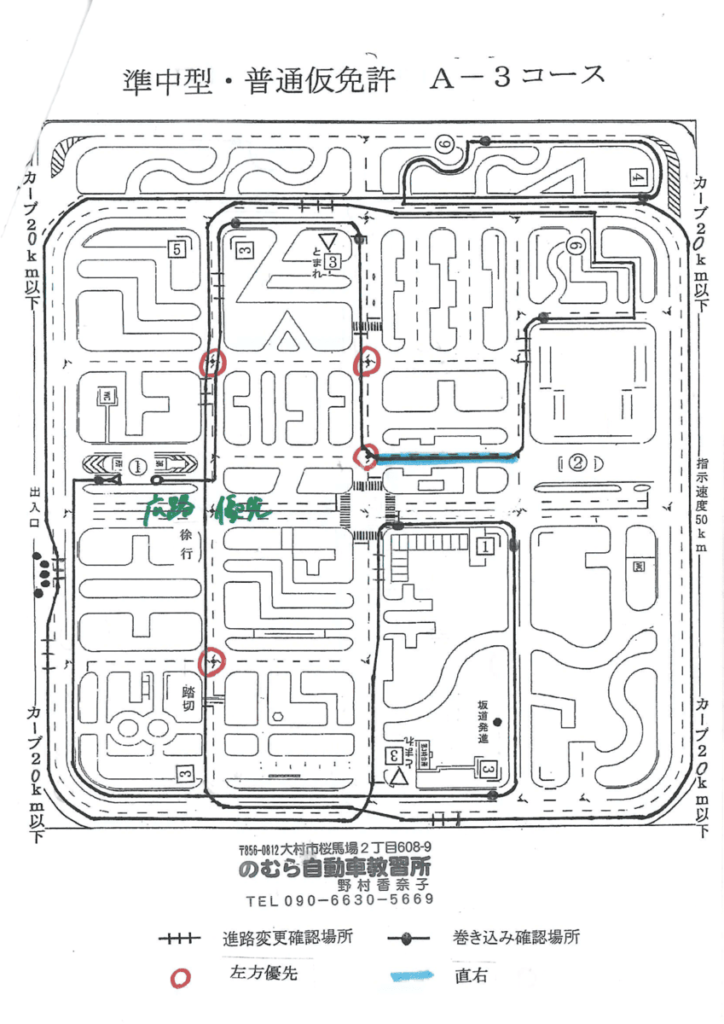
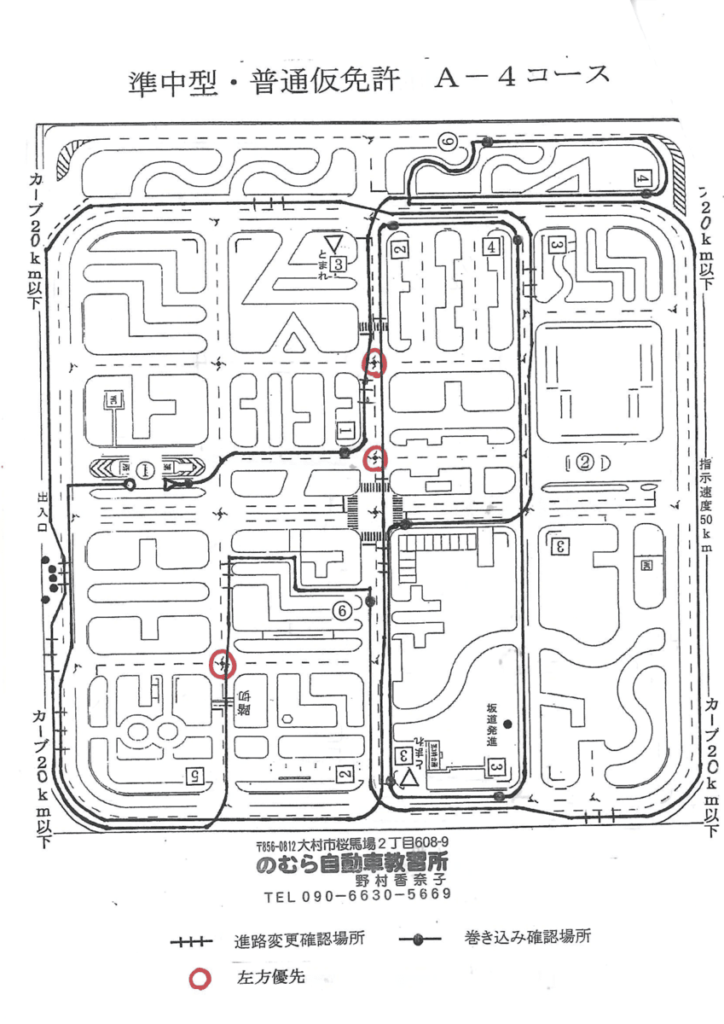
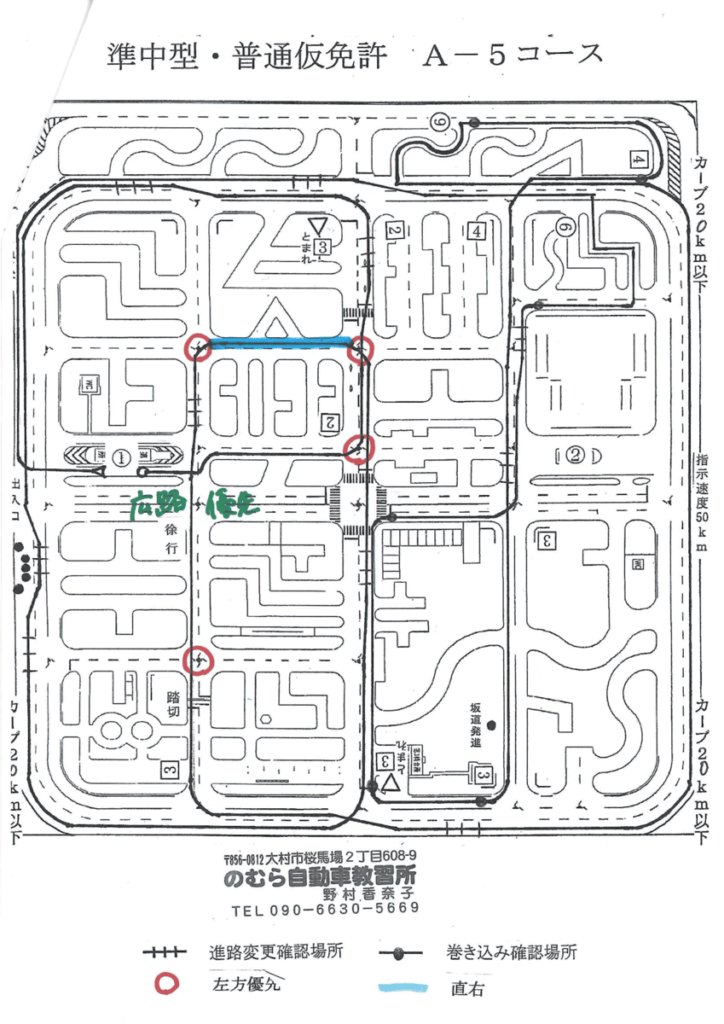
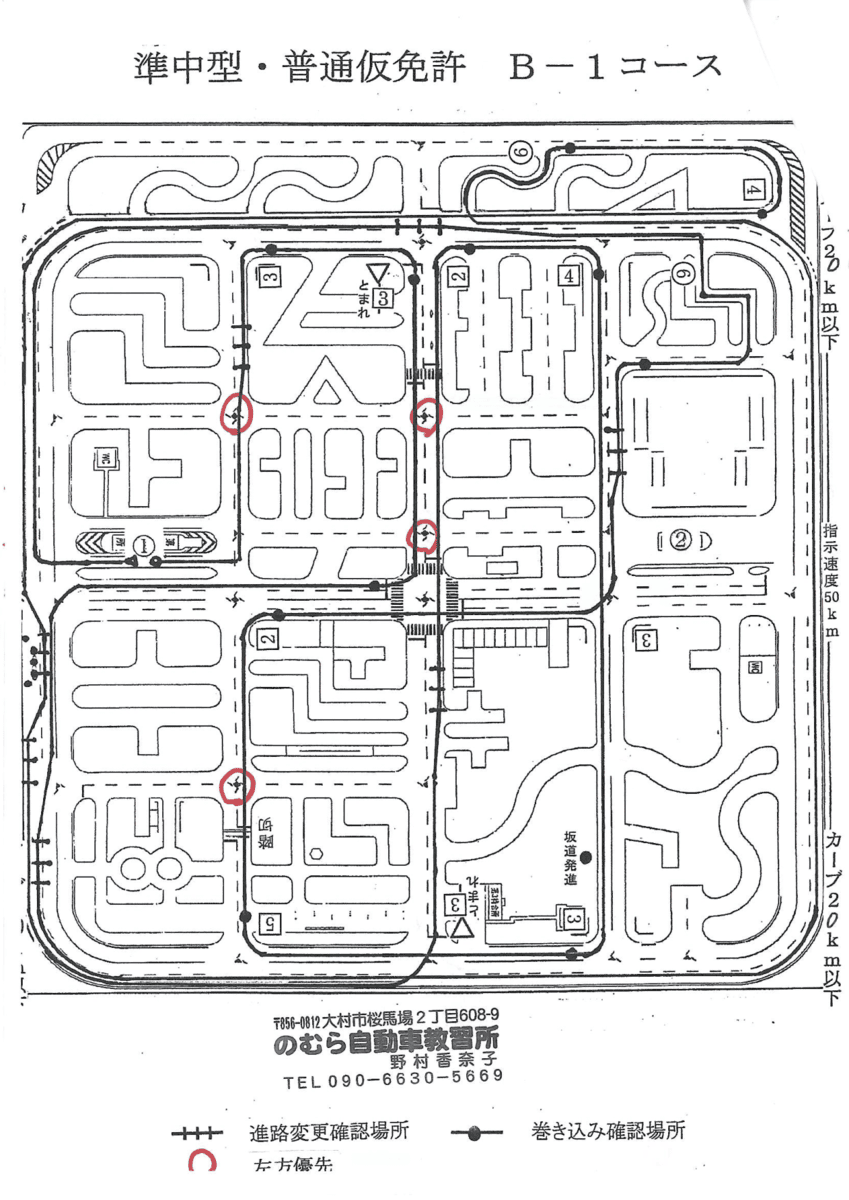
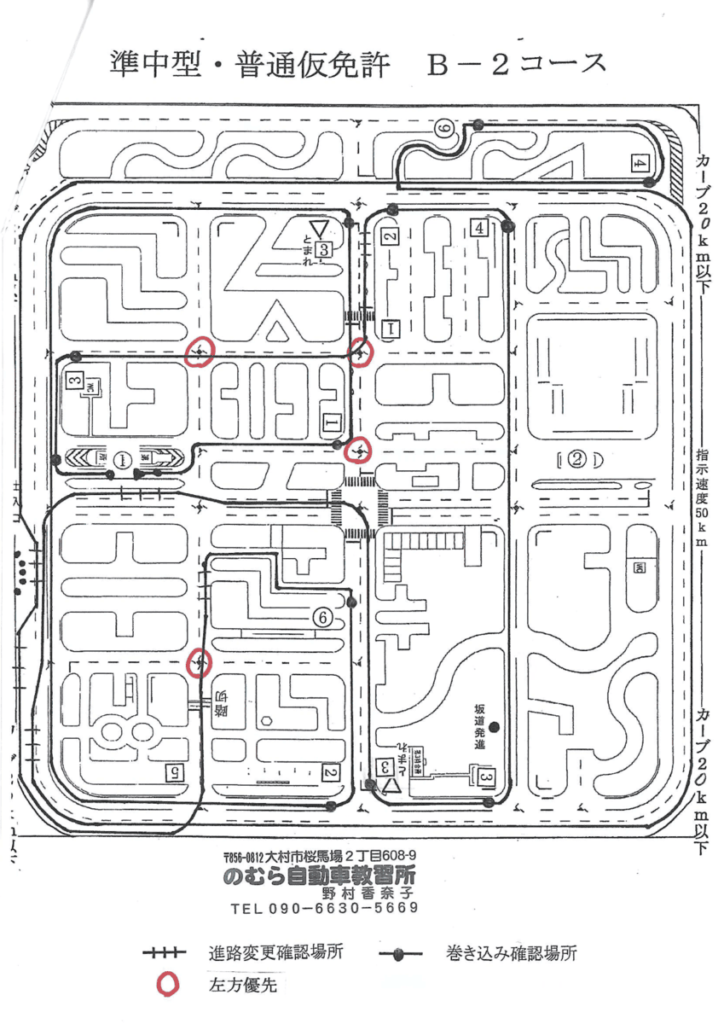
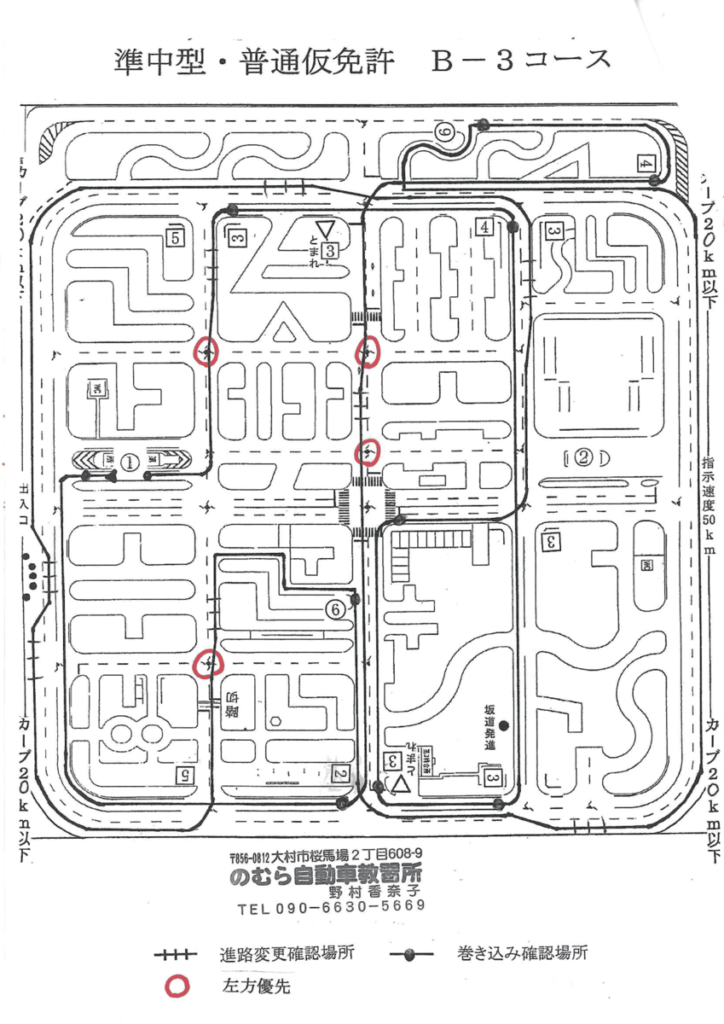
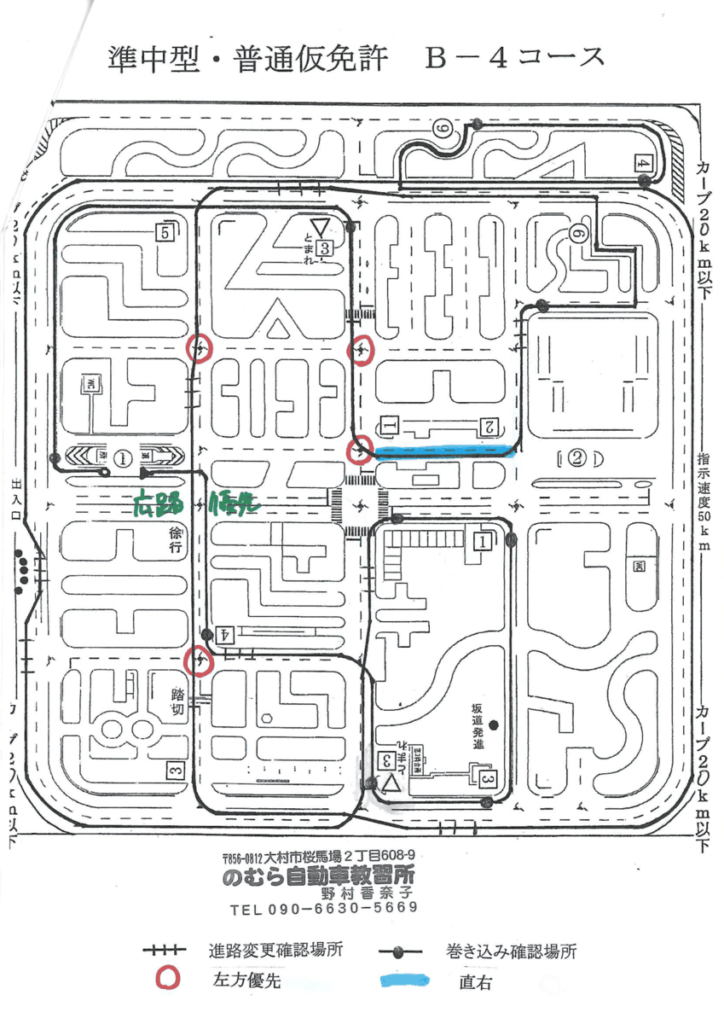
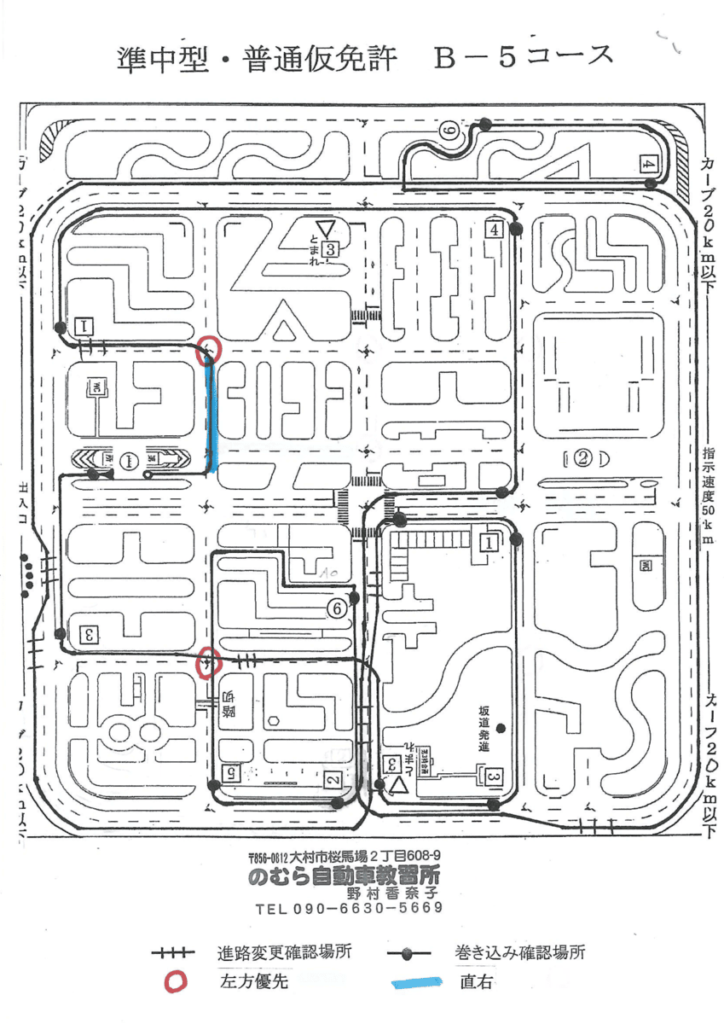
Just before the tests begin the examiner will come into the waiting room and announce the route everyone will take around the course and the order in which people will take the tests, if you’re not the first person to take the test it gives you a bit of time to think over the route you’ll drive. You’ll also sit in the back of the car while the person who goes before you is taking their test.
In preparation for the exam, videos like these can be helpful
The examiner will give you directions throughout the course, so there is no need to memorise all the routes, but doing visualisation exercises in advance, or after you’ve been told which course you’re doing, it will help.
You will receive an explanation sheet in Japanese about the exam and what’s expected of you. It includes information about both provisional and main exams. I made a translation and added in my own notes in red. Pdfs of the translation and original are available below.
If you want a more in depth explanation of the course and driving method, I again recommend this site.
If you understand Japanese it’s a veritable treasure trove and they seem to have information on the test centre of every prefecture. I wish I had found it before taking my test :’-) Even if you’re Japanese is not that great, there are pictures and diagrams which could help you.
- Main exam
This is vaguely similar to the exam I took in the UK. It’s a lot easier though. You start from the same test course that you did the provisional on and then you drive out of the course to do one of several set routes around the local area (you really don’t go very far afield). When you finish the route and come back to the test course you do a manoeuvre which will be either parallel parking or changing direction with a three-point turn via a bay. During the route you will be asked to park on the side of the road at a place that could technically be anywhere but will likely be one of several determined locations (the local practice place people know these locations and get you to practice there). For me this exam was a lot easier than the provisional and I passed first time. Of course, there are more unknown elements and there could be lots of traffic or bicycles around to throw you off.
Taking at least one road practice with a local practice place with give you an idea of the main routes used for the exam.
I hope this has been enough to give you a solid grasp of what is involved in getting a license from scratch. It does take a lot of effort, but the rewards of being able to drive in Japan are worth it. Some great places are very difficult to get to without a car.
If you have your regular license, but are thinking about additional licenses for larger vehicles, please read on.
Other Types of Vehicles
- Semi-medium Truck
If you’re going to try and get a manual license, and you want to work in Japan in the future, consider taking a semi-medium truck (準中型) license instead.
The requirements for applying for it are the same, and it allows you to drive a regular manual afterwards too. You can get lessons from Taiyou, which are a bit more expensive than the regular lessons at 7,200 compared to 4,700 yen. Once you get used to it these small trucks are very easy to drive, and the clutch is very forgiving. I stalled multiple times throughout my regular manual provisional test but not once for the truck.
You are exempt from the theory and the motorway and first aid courses if you’ve already obtained a regular license. You do, however, have to take a special course about driving a truck with load (at Taiyou). In this the truck is loaded with a 1-ton weight, and then you drive around curves of differing angles at different speeds to see how the load is affected. You also do a bit of theory and drive a simulator machine that puts you in unfavourable conditions like rain, snow and driving at night. Once you’ve taken this course you don’t have to later if you want to get medium or large truck licenses.
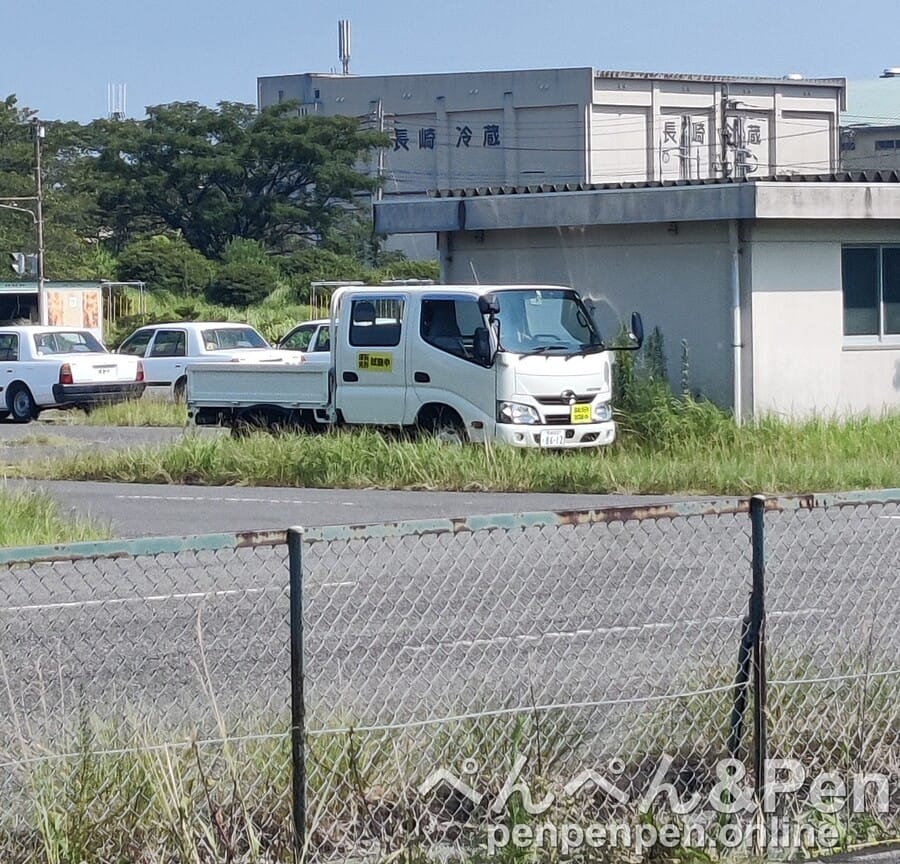
The overall process is very similar to the regular license except you must call to book the tests and tests are not carried out every day of the week so plan accordingly.
Another important point is if you do road practice with a friend you need to submit a copy of their vehicle’s inspection certificate in addition to the other documents to prove that it was the correct size of vehicle.
- Heavy Machinery
Finally, one other very useful license is the heavy machinery (大型特殊) license.
I also took lessons at Taiyou for this. They were pricy at 9,900 yen per 50 min. I ended up only taking 3 lessons but did fail the test once.

This license lets you drive a variety of large vehicles such as excavators, forklifts, tractors and loaders on public roads. The key thing here is that it doesn’t mean you can use a forklift in a job (there is a separate license for that), it simply means you are qualified to drive it on the road (as long as it abides by all other road laws).
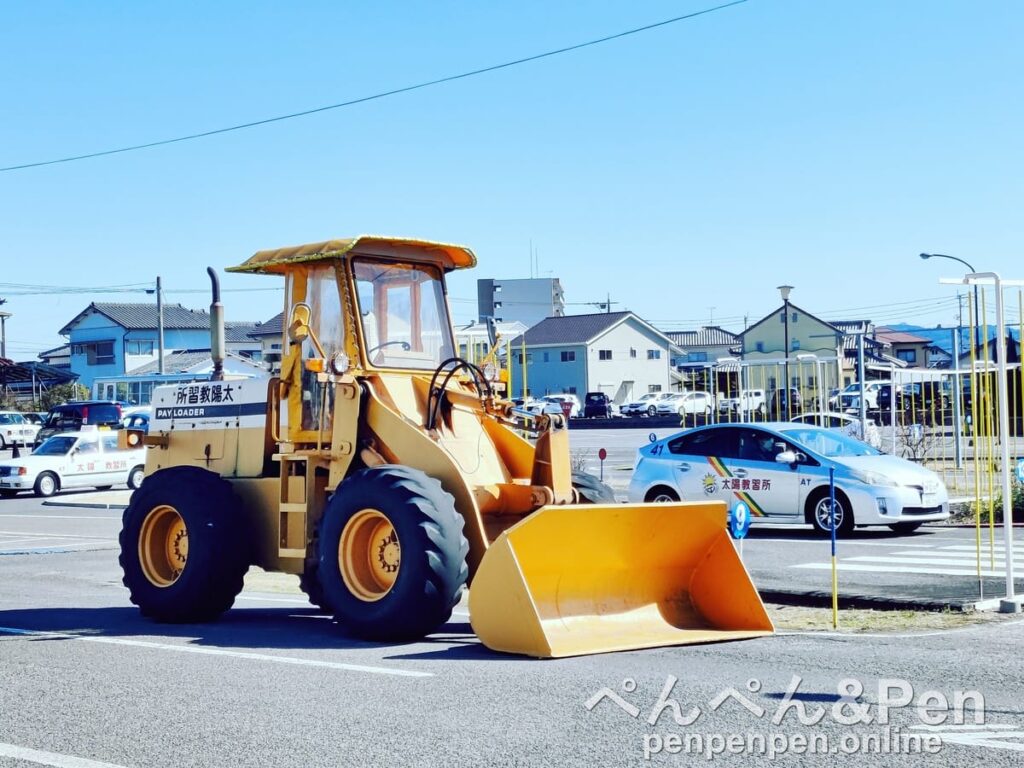
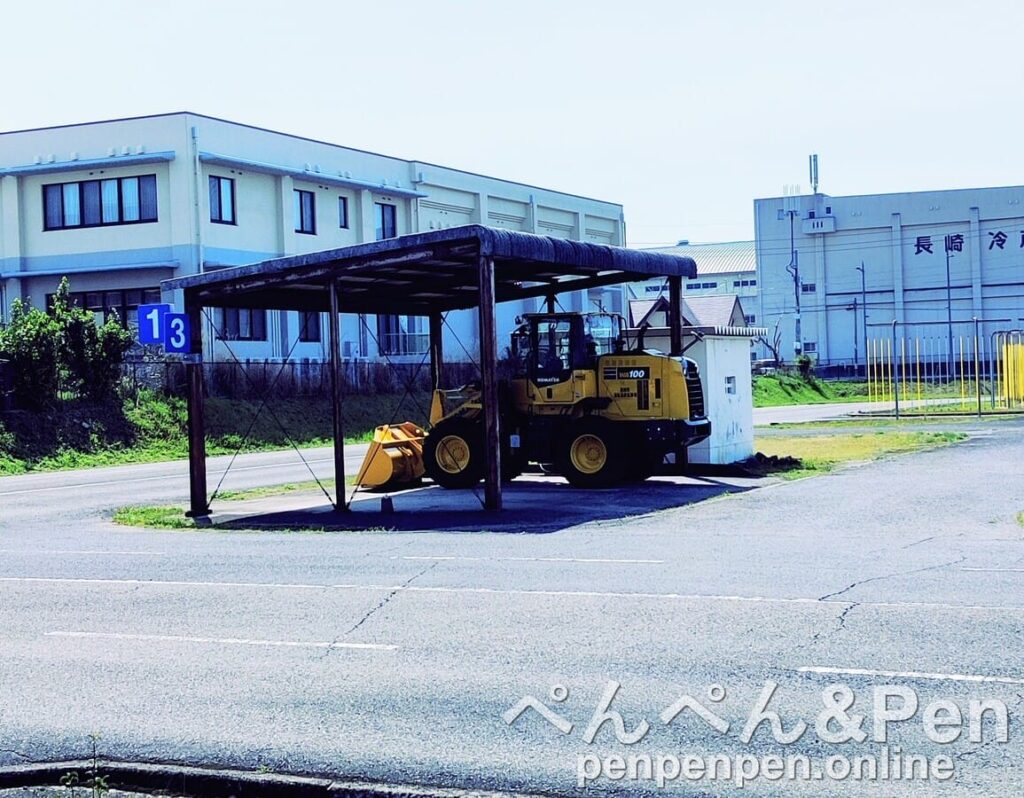
There is only one test and no provisional license. The test is on the test course and is similar to a provisional license practical. The vehicle you use at the Nagasaki prefectural test centre is a wheel loader (Komatsu). Taiyou had an old model but the test used a newer model which was a pain because they were rather different to drive. I did notice that Taiyou have now bought a new model.
If you are interested in work that uses vehicles such as forklifts, then get this license first because it means you can take shorter and cheaper courses when you want to get the forklift etc.
Best of luck to you in obtaining your license and comment below if you have any questions.
Footnotes
- This was a regulation introduced in Japan largely to prevent Japanese citizens from going abroad, getting a license cheaper where there are less strict driving rules, and then converting it when they get back ↩︎
- These websites may have English sections but for driving, this only goes so far as explaining the local conversion process. This is the website for Chiba ↩︎
- All details for these plates are specified on the information sheet you receive. You can make them yourself or buy them online ↩︎
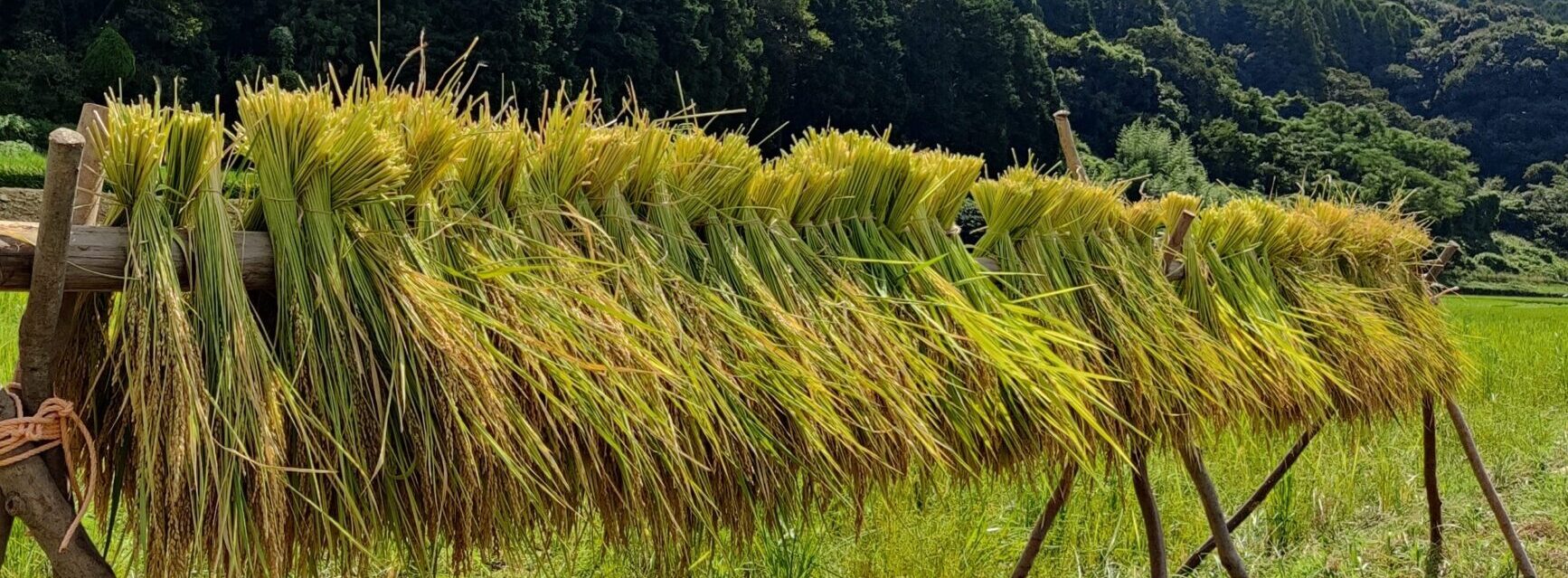

Leave a Reply